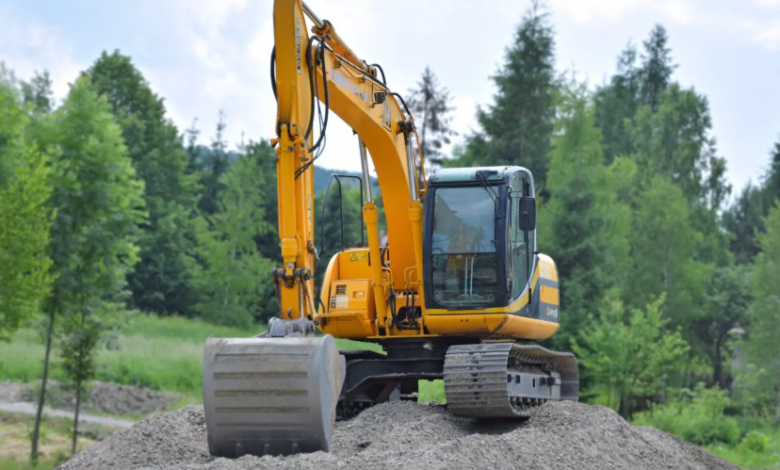Dig Trench Techniques for Efficient Excavation and Safety

Dig trench involves creating a narrow excavation in the ground, often for purposes like drainage, laying cables, or installing pipes. The key to effective trench digging is using the right tools and techniques to ensure the trench is the proper depth and width, with a clean, stable bottom.
Whether working by hand or with machinery, planning the project carefully helps avoid common issues such as uneven bottoms or collapsing sides. Understanding these basics prepares anyone to tackle trenching tasks safely and efficiently.
Essential Steps to Dig a Trench
Digging a trench requires careful preparation, accurate measurements, proper tool selection, and effective excavation methods. Each phase builds on the previous one to ensure a safe, precise, and efficient trench.
Planning the Trench Route
Before any digging begins, identifying the exact path for the trench is critical. The route should avoid underground utilities, tree roots, and other obstacles. Contacting utility companies to mark buried lines is a necessary safety step.
He or she should also consider the trench’s purpose, depth, and slope requirements based on soil type and drainage needs. Planning for access points and equipment placement improves workflow and reduces risks.
Mapping the route and visualizing site conditions help anticipate challenges and minimize onsite changes once digging starts.
Marking and Measuring
Accurate marking and measuring lay the foundation for trench precision. Using marking paint or stakes marks the trench boundaries clearly. Measurements must account for width, depth, and length according to project specifications.
Tools like measuring tapes, laser levels, or string lines ensure straight and level trenches. Consistent checking during the process prevents deviations that could affect installation or stability.
A checklist might include:
- Mark starting and ending points
- Measure width and depth increments
- Verify slope or grade if necessary
Maintaining clear visual guides aids safe and efficient excavation.
See also: It Managed Service Provider Near Me: Reliable Solutions for Your Business Needs
Selecting the Right Tools
Choosing appropriate tools depends on trench size, soil condition, and project scale. For hand digging, a standard shovel is essential for general soil removal, while a spade helps cut through dense or compacted ground.
A mattock or pickaxe is useful for breaking hard soil or rocky areas. For larger trenches, renting a mini excavator or trencher can increase speed and reduce labor.
Other tools may include:
- Tape measure
- Level or laser level
- Marking paint
- Wheelbarrow for soil removal
Suitably matched tools improve accuracy and reduce physical strain.
Excavation Techniques
Efficiency and safety during digging depend on technique and soil conditions. Loosen the soil gradually, starting with the trench’s outline before moving deeper.
In hard or clay soils, breaking the ground with a mattock before shoveling reduces effort. Maintaining proper posture minimizes injury.
Removing soil in manageable layers avoids trench collapse early on. For deeper trenches, sloping or benching the sides increases stability.
Regularly check depth and alignment with a level to meet project specs precisely. Clear away excavated soil at least 12 inches from trench edges to prevent hazards.
Trench Safety and Best Practices
Trenching requires precise attention to prevent hazards like collapses, flooding, and damage to nearby structures. Proper methods and equipment can reduce risks and protect workers and property.
Preventing Collapses
Collapses are the most significant risk in trenching. Implementing protective systems such as trench boxes, shoring, or sloping is essential.
Soil types influence the stability of trench walls. Before digging, workers must test soil to determine if it is stable, granular, or cohesive. This informs the correct protective method.
Inspections are crucial. A competent person should assess the trench daily and after events like heavy rain or vibrations. Ensuring no workers enter unsupported trenches deeper than 5 feet is critical unless safeguards are in place.
Managing Water and Drainage
Water accumulation weakens trench walls, increasing collapse risk. Continuous monitoring and removal of groundwater and surface water are necessary.
Pump systems or gravity drains should be used to remove standing water. Surfaces around the trench must be graded to divert runoff away from the excavation.
Workers must avoid working in trenches with water unless protective measures are in place. Proper drainage planning also reduces slippery conditions and electrical hazards.
Protecting Surrounding Structures
Excavation can affect nearby buildings, roads, and utilities. Operators must verify underground utilities before digging, typically by calling local utility services (e.g., 811 in North America).
Heavy equipment should be positioned to minimize vibration and load stress near structures. Monitoring for shifts or cracks in adjacent infrastructure is necessary during and after excavation.
Temporary supports or underpinning may be required to stabilize structures at risk. Maintaining clear communication with property owners and construction teams ensures coordinated safety efforts.





